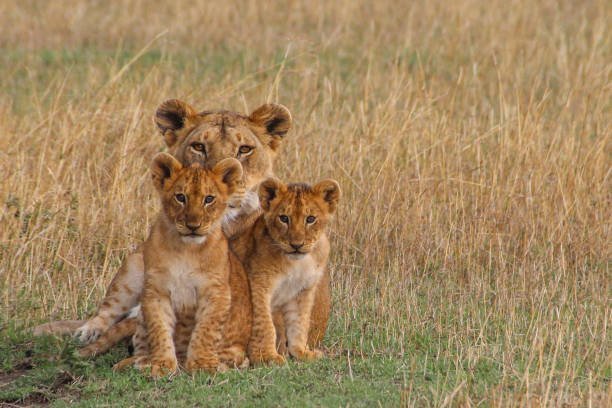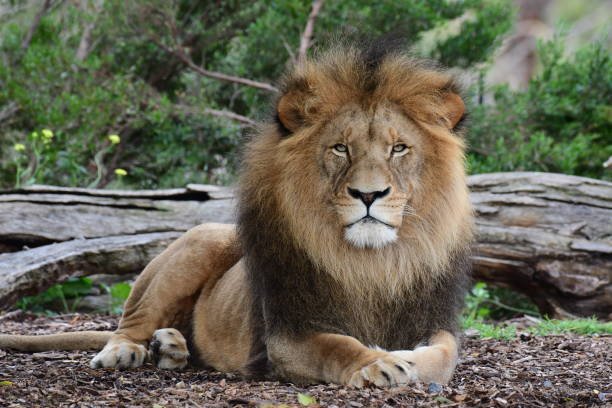What are the ethical considerations in lion rescue and rehabilitation?

Introduction:
In this article, we navigate a complex ethical terrain: the considerations surrounding lion rescue and rehabilitation. The process of rescuing and rehabilitating lions is a multifaceted endeavor, intertwining conservation, animal welfare, and moral principles. Ethical dilemmas emerge at the intersection of human intervention and the inherent wild nature of lions.
Questions arise concerning the ethical treatment of these apex predators, encompassing concerns about captivity, behavioral modification, and the challenges of reintroduction. Moreover, the broader implications, including the impact on ecosystems and the moral obligation to preserve species, shape the ethical discourse. This article delves into these ethical intricacies, exploring the moral responsibilities, dilemmas, and ethical frameworks that guide the decisions and actions in lion rescue and rehabilitation initiatives.
Captivity vs. Wild Nature:
One of the central ethical dilemmas in lion rescue and rehabilitation revolves around the concept of captivity versus wild nature. Captivity can offer lions safety, medical care, and consistent access to food, but it restricts their natural behaviors and freedom. In contrast, wild nature provides an environment where lions can express their natural instincts and engage in hunting, socializing, and territory marking.
Ethical considerations arise in deciding the balance between these aspects. While captivity ensures immediate safety, it may compromise the animal’s overall well-being due to the lack of stimulation and freedom. However, releasing lions directly into the wild after captivity raises concerns about their ability to survive, given their potential dependence on human-provided food and the lack of essential hunting and survival skills.
Behavioral Intervention and Modification:
Behavioral intervention and modification play a crucial role in lion rescue and rehabilitation. Rescued lions often come from traumatic backgrounds, such as circuses or private ownership, which can lead to abnormal behaviors. Ethical concerns arise when behavioral modification techniques, such as positive reinforcement or desensitization, are used to help lions adapt to new environments.
Striking a balance between modifying behaviors for the well-being of the animal and respecting the innate wild instincts of lions is a delicate ethical challenge. The goal is to ensure that behavioral modifications do not compromise the animal’s natural behaviors or hinder its ability to reintegrate into the wild successfully.
Release and Reintegration Challenges:
The release and reintegration of rehabilitated lions into the wild pose significant ethical challenges. Releasing lions back into their natural habitat is the ultimate goal, but it’s fraught with complexities. Lions raised in captivity may lack essential survival skills, making them vulnerable in the wild.
Moreover, releasing lions from captivity into existing wild populations can introduce diseases or disrupt social structures, potentially harming both wild and captive lions. Ethical considerations demand careful planning, such as pre-release training programs that simulate hunting and encourage social interactions.
Long-term monitoring is essential to assess the success of reintegration efforts and ensure that released lions can sustain themselves in their natural habitats without causing harm to existing ecosystems. Ethical decision-making in these situations must prioritize the well-being and conservation of both individual lions and the broader ecological balance of the wild environment.
Conservation vs. Animal Welfare:
Ethical considerations in lion rescue and rehabilitation often involve navigating the delicate balance between conservation and animal welfare. Conservation efforts aim to protect and preserve lion populations and their ecosystems, ensuring the survival of the species in the wild. This goal sometimes necessitates actions that may seem ethically challenging from an animal welfare perspective, such as capturing, relocating, or euthanizing lions that pose a threat to human communities or other wildlife.
Conversely, animal welfare concerns prioritize the well-being and humane treatment of individual lions. This includes considerations of their physical and psychological health, quality of life, and freedom from suffering. The ethical dilemma arises when conservation actions, such as relocating lions to protected areas, potentially compromise the welfare of the rescued lions.
Human Responsibilities and Moral Obligations:
Ethical considerations extend to human responsibilities and moral obligations in lion rescue and rehabilitation. Human actions, including habitat destruction, poaching, and conflicts with lions, are often the root causes of lions needing rescue in the first place. Ethical questions emerge regarding the responsibility of humans to mitigate the harm inflicted on lions and their habitats.
This involves not only rescuing and rehabilitating individual lions but also addressing the systemic issues that threaten their existence. Conservation organizations, governments, and local communities have moral obligations to protect lions and their ecosystems. These obligations encompass providing financial support, establishing protected areas, and implementing strategies to reduce human-wildlife conflicts. Ethical decisions must prioritize the well-being of lions and their long-term survival while acknowledging the role of humans in their plight.
Ethical Frameworks and Decision-Making:
Ethical frameworks and decision-making processes are essential aspects of lion rescue and rehabilitation. Conservationists and policymakers rely on ethical principles to guide their actions and choices.
Ethical frameworks often involve principles such as beneficence (doing good for the species and individual lions), non-maleficence (avoiding harm), justice (equitable distribution of resources and conservation efforts), and autonomy (respecting the natural behaviors and choices of the lions). Ethical decision-making requires a thorough evaluation of the potential consequences of actions, considering the welfare of the rescued lions, the conservation goals, and the broader ecological implications.
Moreover, it involves stakeholder engagement, including local communities and animal welfare organizations, to ensure a balanced and ethically sound approach to lion rescue and rehabilitation. Ethical frameworks help ensure that actions taken are not only well-intentioned but also morally justified, transparent, and aligned with the values of conservation, animal welfare, and ethical responsibility.
Conclusion:
I hope this exploration sheds light on the intricate ethical considerations entwined in lion rescue and rehabilitation. Balancing conservation imperatives with individual animal welfare, addressing human responsibilities, and employing robust ethical frameworks are paramount.
Our moral obligations lie in holistic approaches. It’s not just about rescuing lions; it’s about mitigating the root causes of their plight. We must advocate for sustainable human-wildlife coexistence, protect habitats, and foster understanding between communities and conservation efforts. Ethical decisions should be grounded in principles of compassion, respect, and ecological mindfulness.
By prioritizing both the welfare of individual lions and the conservation of their species, we can navigate these complexities ethically, ensuring a future where lions thrive in harmony with their natural habitats and humanity. This balance is not just a moral duty; it’s a pledge to the intricate tapestry of life that sustains our planet.










Post Comment